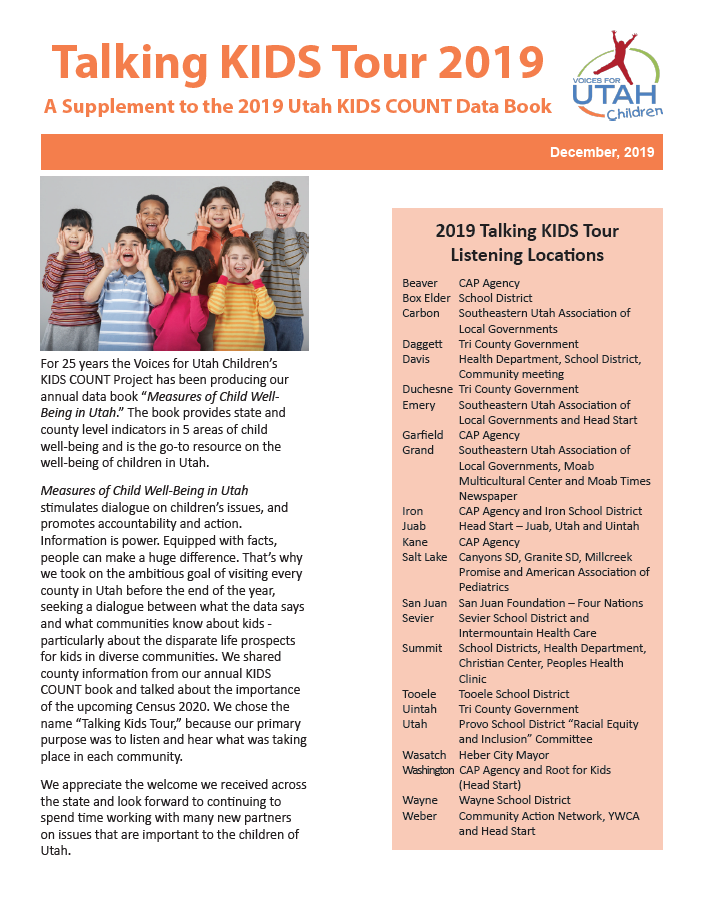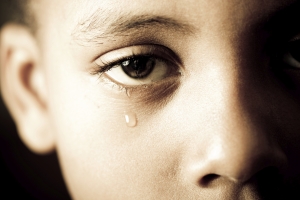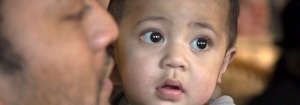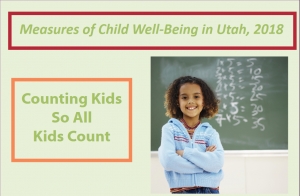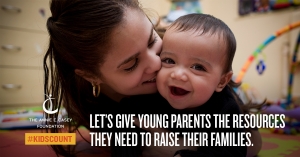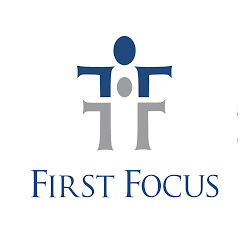Kids Count
In 2019, we took on the ambitious goal of visiting every county in Utah. We shared county information from our annual KIDS COUNT book and talked about the importance of the upcoming Census 2020.
To read about the key issues that we heard during our tour, please click on the image below.
![]() Talking Kids Tour 2019 - A Supplement to the 2019 Utah KIDS COUNT Data Book
Talking Kids Tour 2019 - A Supplement to the 2019 Utah KIDS COUNT Data Book
Thanks for Talking!
Everyone at Voices for Utah Children would like to express our gratitude to everyone that met with us on the “Talking Kid’s Tour 2019”. We shared information from our KIDS COUNT County data pages with everyone and reminded them about the upcoming 2020 Census and how an undercount could affect their communities. We received so much informative and insightful feedback.
We had the opportunity to meet with local elected officials, school district leadership, health departments, Head Start programs and community organizations that I want to share some of the key takeaways we have learned to date.
• Mental Health is a major issue facing our youth population. We are seeing an increase of trauma statewide and we do not have an adequate number of providers in any county. We heard stories of children as young as four being in crisis.
• Addiction is having a major impact on our youth. We confirmed that opiods are still an issue, but that meth was back in a large number of communities. The impact on the children and communities is devastating.
• Childcare is a major issue. There is a clear lack of affordable and accessible space statewide. A year of childcare for children 0-3 currently costs more than an average year of college in Utah.
• Insurance coverage for our youth is a problem on a number of fronts. Our current Medicaid coverage does not guarantee continuous coverage and the average child is only enrolled for 11 months annually. We also saw a 22% increase in the overall number of uninsured children in Utah.
• Communities are funding Pre-K programs with a combination of grant funds and local financial supports. Many communities would like to expand their programs but do not have the resources.
• There is a growing demand for Optional Extended Day Kindergarten. This is being driven by both educators and the economy. There are more families where both adults are working and the need for an extended day is critical.
• The majority of the counties expressed serious concerns regarding Tax Reform. They are worried that there will be an increased burden placed on local school boards to make up funding gaps, which they really cannot afford. There is also a concern that the increased gas and grocery tax will hurt those most in need. They acknowledge that the credits help, but they are more concerned about the immediate impact of the increased costs.
• We learned of so much great work being done locally to meet the challenges outlined. There are tremendous partnerships being formed in many counties and regions. We felt privileged to be able to spend time and learn from these leaders
• Many innovative programs being piloted are transferrable and we are in the process of connecting some of the groups. A few examples are having dental and diabetic screenings at local food banks, bringing health care directly to Title One schools that qualify, and Identifying grants and funding sources for Early Childhood Education.
We have been to 25 Counties and are planning to continue holding meetings into the New Year . It has been invaluable to go directly into the local communities and meet so many wonderful people. The work being done on the ground has been truly inspirational and motivating. I was asked at a gathering- “What is the good news”- to which I replied that the people in the room were the good news.
Our state is fortunate to have so many good people trying to do good work on behalf of our children. We are thankful to have spent time with them and look forward to continuing to be their VOICE!
Thanks,
Moe Hickey
CEO
Voices for Utah Children
New KIDS COUNT Data Snapshot "Children Living in High Poverty, Low-Opportunity Neighborhoods"
Utah Shows Slight Improvement in the Number of Children Living inConcentrated Poverty
Native American children in Utah are twice as likely as children in the U.S. to live in concentrated poverty.
Salt Lake City, UT — The percentage of children in Utah living in concentrated poverty — that is, a neighborhood where 30 percent or more of the population is living in poverty — declined from a high of 6% in 2010-2014 to just 2% in 2013-2017 according to “Children Living in High Poverty, Low-Opportunity Neighborhoods,” a new KIDS COUNT® data snapshot released today by the Annie E. Casey Foundation. Using the latest data available from the U.S. Census Bureau, the snapshot examines where concentrated poverty has worsened across the country despite a long period of national economic expansion.
Utah’s rate of 2% in 2013-2017 (down from 3% in 2006-2010) compares to 12% nationally. Even so, there are 22,000 Utah children living in areas of concentrated poverty. Growing up in a community of concentrated poverty is one of the greatest risks to child development.
Children in high-poverty neighborhoods tend to lack access to healthy food and quality medical care and they often face greater exposure to environmental hazards, such as poor air quality, and toxins such as lead. Financial hardships and fear of violence can cause chronic stress linked to diabetes, heart disease and stroke. And when these children grow up, they are more likely to have lower incomes than children who have relocated away from communities of concentrated poverty.
Key findings from the snapshot include:
- American Indian/Alaskan Native children in Utah are much more likely to live in concentrated poverty at 24%
- Hispanic children in Utah are three times as likely to live in concentrated poverty (6%)
- Utah children living in metropolitan areas are more likely than their rural counterparts to live in concentrated poverty at 10% compared to 4% respectively.
- Immigrant children are slightly more like to live in these neighborhoods at 5%.
Voices for Utah Children joins the Casey Foundation in calling on national, state and local stakeholders to act now to help families lift themselves out of these circumstances. Policies at the community, county and state level that can have a significant impact on the lives of children in struggling families include:
- Supporting development and property-ownership models that preserve affordable housing, such as community land trusts and limited-equity cooperatives.
- Ending housing discrimination based on whether a person was formerly incarcerated or is using a federal housing voucher.
- Assisting low-income residents in paying higher property taxes that often come with new development/redevelopment or with a family’s relocation to a more affluent area.
- Expanding workforce training that is targeted to high-poverty, low-opportunity communities.
- Requiring and incentivizing anchor institutions to hire locally and contract with businesses owned by women and people of color.
- Developing and funding small-business loan programs that serve entrepreneurs in low-income neighborhoods and communities of color — or people that traditional lenders tend to reject, such as individuals with poor credit or criminal records.
Click here to read full report.
:
This week, the American Academy of Pediatrics (AAP), the nation’s largest group of pediatricians, warned that racism can have devastating long-term effects on children’s health.
The warning comes in a new policy statement titled, “The Impact of Racism on Child and Adolescent Health,” developed by the AAP’s Council on Community Pediatrics, Section on Adolescent Health, and Committee on Adolescence. The full statement is available at https://pediatrics.aappublications.org/content/early/2019/07/25/peds.2019-1765 and will be published in the August issue of Pediatrics.
This policy statement is the first the AAP has issued to its members on the dangers of racism. Doctors involved in the report said the current political and cultural atmosphere makes the work to end racism more urgent.
The Utah Chapter of the American Academy of Pediatrics and Voices for Utah Children applaud this policy statement. We join pediatricians in calling upon members of the public to help prevent racism and ensure race equity, and recommend, as an important action step, championing and embedding inclusion within their organization.
“Racism affects (and harms) each of us individually and all of us collectively. This statement is so vital and timely in that it encourages us to directly examine these effects and make the changes in ourselves, our families and our organizations that will allow us to recognize and benefit from the richness of our diversity," says Paul Wirkus, MD, President of the Utah Chapter of the American Academy of Pediatrics.
As the KIDS COUNT designated organization in Utah, Voices for Utah Children is committed to race equity and inclusion. The AAP’s new policy statement reinforces the importance of the work Voices is doing to ensure that the data we collect, analyze and disseminate is disaggregated wherever possible to uncover patterns of racial inequity. We encourage public institutions, government agencies, and community stakeholders to become deeply invested and committed to using this disaggregated data in their decision-making process so they can more effectively manage and allocate resources to help children and families.
To gain a deeper understanding of how specific groups of people or specific geographic areas of our state are faring, it is important to disaggregate data. This policy statement highlights the need for the collection, analysis and use of data that is broken down by race and ethnicity,. Data broken out this way helps to more clearly underscore trends and disparities, develop targeted strategies and provide greater accountability.
Breaking Down Data to Help All Families Thrive
Breaking Down Data to Help All Families Thrive
At Voices for Utah Children we start with the question, “Is it good for kids?” We advocate for data-driven policy and community solutions to improve the lives of all children. This data brief and case study examines why the collection, analysis and reporting of race and ethnicity data is critical to help drive policy solutions for Utah kids. If we only report on whole populations, we may overlook important racial or ethnic trends and disparities. By sharing outcome data for different racial and ethnic groups, we can help address systemic problems and ensure greater accountability in policymaking and public programs.
Case Example of Utah Native Hawaiian/ Pacific Islander Birth Outcomes
In Utah, there are nearly 38,00 Native Hawaiians/Pacific Islanders (NHPIs). The overall percentage of NHPIs living in Salt Lake City is greater than any other city in the continental U.S. The median age of Utah NHPIs is 20.2, making them one of the youngest populations in Utah.
In 2010, the Utah Department of Health Office of Health Disparities examined the infant mortality rate for the NHPI community for the first time. Previously, birth outcomes for the NHPI community had been reported together with birth outcomes for Utah Asian Americans. When grouped together, the infant mortality rate for the Asian American and Pacific Islander communities was lower than the state average at 4.6 deaths per 1,000 births, compared to the overall average of 5.2 deaths per 1,000 births.
However in 2010, when prenatal and birth outcomes for NHPIs were examined separately, the data told a very different story: Pacific Islander infants under one year had nearly twice the death rate (8.8 deaths/1,000 births) of infants statewide (4.5 deaths/1,000 births). While only 1.3% of all Utah infants were born to Pacific Islander mothers, their babies made up 2.5% of all infants who died. Other birth outcomes disparities among Pacific Islanders, including access to prenatal care, also surfaced.
These alarming findings underscored the importance of greater access to and breakdown of ethnic/racial data to understand population trends. In response, the Office of Health Disparities conducted additional research and investigation. OHD worked collaboratively with state and local partners to develop a community-based health promotion and education program to reach NHPI residents in Utah. The “It Takes a Village: Giving Our Babies the Best Chance” (ITAV) project raises awareness and addresses birth outcomes disparities in the context of Pacific Islander cultural beliefs and practices. The ITAV project has been designated a promising, innovative practice from national public health organizations. Results show that the ITAV project effectively raises awareness, improves knowledge, and increases self-efficacy among NHPI participants. In 2019, the University of Utah Department of Family and Preventive Medicine received funding to expand the ITAV project to St. George with the Southern Utah Pacific Islander Health Coalition, broadening the reach and impact of the project. In addition, the data disaggregation at the root of the ITAV project inspired other states, including California, to collect and report disaggregated health data for Native Hawaiians and Pacific Islander populations.
Moving Forward
All too often, public institutions and systems report data on whole populations or broad population categories. Yet this case study highlights how public institutions can also lead the way, rethinking current practice around data disaggregation, reporting and response.
Going forward, Voices for Utah Children is actively working to ensure that the data we share, such as the annual Kids Count Data book, can better disaggregate Utah demographics. We call upon more state and local public institutions and agencies to do the same. Our state agencies must continue to be leaders in data disaggregation to ensure families are getting the care they need. Disparities cannot be fully identified or addressed without adequate data and reporting.
It is equally important to ensure that disparities identified are met with culturally appropriate resources, investments and policy change. The ITAV project demonstrates how disaggregated data, coupled with community-based solutions, can help more families be empowered to change their health practices. While many factors influence health outcomes and trends, community-driven public health interventions, like the ITAV project, can play a significant role.
However, disparities in maternal and birth outcomes persist in Utah. NHPI mothers are still receiving less prenatal care than other populations in Utah. This points to the need to address more systemic inequities in access to care, insurance coverage and culturally-competent health care services. All mothers and infants in Utah deserve a healthy start, regardless of their culture or background. Policies that promote affordable, quality health care, including Medicaid coverage, access to prenatal services and mother-infant support programs can help improve the lives of all Utah moms, babies and communities.
To download a copy of the brief and references:
Utah Ranks Seventh Overall in Child Well-Being, but Falls Near the Bottom (41st) For Children Without Health Insurance
Utah ranked seventh among states for overall child well-being, according to the 30th edition of the KIDS COUNT Data Book, released today by the Annie E. Casey Foundation. Among the four domains, Utah ranked highest in family and community, landing in the number one spot, and lowest in health, ranking 21st among all the states. The 2019 KIDS COUNT Data Book is the most comprehensive annual report on child well-being in the United States and notes measurable progress since the first Data Book, which was published in 1990. Nevertheless, almost 100,000 Utah children live in poverty and serious racial and ethnic disparities persist.
It’s important to realize that Utah is now home to almost 300,000 more children since 1990. Even in the areas where we saw improvement, Utah still has more children lacking opportunities afforded to other children. For example, while there has been an 8 percent improvement in child poverty in the state, Utah now has almost 25,000 more children living below the federal poverty level than in 1990.
Utah is also seeing a more diverse child population than in 1990. While 90 percent of Utah’s kids were non-Hispanic white in 1990, 76 percent were in 2017.
“With this boom in the youth population, greater investments must be made to expand programs that help lift Utah’s families out of poverty,” said Terry Haven, Deputy Director of Voices for Utah Children.
The annual KIDS COUNT Data Book from the Annie E. Casey Foundation uses 16 indicators to rank each state across four domains — health, education, economic well-being and family and community — as an assessment of child well-being. Utah improved its ranking in one domain, fell in ranking in two domains and stayed the same in one domain. Utah ranks:
-
4th in economic well-being. Utah rose in ranking from seventh to fourth in economic well-being. However, 24 percent of Utah kids live in households with high housing cost burdens and almost 100,000 Utah children still live in poverty.
-
13th in education. Utah fell in ranking from 12th to 13th. The good news is that Utah has made improvements in the percentage of 3- and 4-year-olds who are in preschool, even though we still lag behind the U.S. in this area.
-
1st in the family and community domain. Utah remained number one in this domain, improving or staying the same in all four indicators. However, Utah did see an increase in the number of children in single-parent families from 2016 to 2017, from 166,000 to 173,000, even though the percentage remained the same.
-
21st in health. Utah fell from 19th to 21st in ranking, and the health domain remains the state’s worse ranking. Utah lags behind the rest of the nation with regard to the percentage of children who still lack health insurance.
The KIDS COUNT Data Book shows how essential accurate data are to sound policymaking. Because data are compared across the country, policymakers are able to understand what it will take to make improvements in child well-being. For example, to improve uninsured rates to the same level as the national average of 5 percent, the state needs to reduce the number of uninsured children in Utah by almost 20,000. Similarly, if Utah wants to be the best in the nation in the number of children living in poverty, the state will need to help improve the lives of 6,500 children. This means we must continue to ensure that all kids have the resources, supports and opportunities to thrive.
“The KIDS COUNT rankings are a good way to determine which states are near the top, which are in the middle and which states are near the bottom in terms of overall child well-being,” says Haven. “We use this data to examine trends within our state, to determine if we are improving, and to gauge if the policy changes we make are helping or hindering our children. The data call on lawmakers to take note and implement or protect sound policies.”
The data book can be found at https://www.aecf.org/resources/2019-kids-count-data-book/.
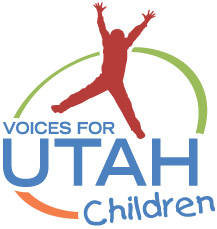
UNDER EMBARGO until Tuesday, April 2 at 12:01 a.m. ET
Contact: Terry Haven, , 801-364-1182
Utah Making Strides in Keeping Children in Foster Care Connected to Families
New 10-year Data Snapshot with State-by-State Data from the Annie E. Casey Foundation
Shows 88% of Foster Children are Placed in Families in Utah
Salt Lake City, UT—Utah had 2,954 children in foster care in 2017 according to the“Keeping Kids in Families: Trends in U.S. Foster Care Placement,” a new data snapshotreleased today by the Annie E. Casey Foundationas part of its KIDS COUNT® project.Using datafrom the child welfare system across all 50 states and the District of Columbia over a 10-year period to look at how placements for young people in foster care have changed, the report finds 88% of Utah foster children were place in family settings rather than group homes or institutions in 2017 compared to 79% in 2007. Nationwide care systems placed 86 percent of these children in families in 2017, compared with 81 percent in 2007. However, nationwide and here in Utah there are persistent racial disparities for children of all ages in foster care.
While the overall trend is good, the numbers are not as good for older kids and children of color. The good news is that improvement was made for older kids and African American children. The bad news is they lag behind their peers in terms of placement. In 2017, only 1% of children 12 year and under are placed in group homes or institutions compared to 24% of children over age 12. Similarly, placement rates in group homes or institutions for African American children are at 14% compared to 9% for Non-Hispanic White children.
“ Overall, the news is good for children in the care of the child welfare system in Utah,” said Terry Haven, Interim CEO of Voices for Utah Children. “While across the nation there has been little progress for teens, with the national rate remaining flat overall, Utah saw progress in placing teens in a family setting.”
The “Keeping Kids in Families”snapshot shows that across all age and race categories, Utah saw improvement in placing children in family settings. In 2007, 31% of children over the age of 12 were placed in group homes or institutions compared to 24% in 2017.
Being part of a family is a basic human need and essential to well-being, especially for children, teenagers and young adults who are rapidly developing and transitioning to independence, as documented in the Casey Foundation’s 2015 report, Every Kid Needs a Family.The new data suggest a growing consensus among practitioners and policymakers that young people in the child welfare system should live in families.Throughthe Family First Prevention Services Act, signed into law in 2018, states are empowered to prioritize family placement and high-quality, family-centered settings which produce the best outcomes for young people.
Key national findings from “Keeping Kids in Families”include:
-
For teenagers, progress in family placements has been elusive. Nationwide, more than a third of young people in child welfare systems who are 13 and older lived in group placements in 2017 ― the same proportion as 10 years ago.
-
A breakdown by race shows that progress is highly uneven. Systems increased the placement rate of white youth in family homes from 81 percent to 87 percent, but outcomes for Latino and African-American children improved by just 3 percent, and by just 1 percentage point for Asian-American children.
Voices for Utah Children joins the Casey Foundation in calling on child welfare systems to use the opportunities afforded by Family First to increase available services to stabilize families. Similarly, states can:
-
Prioritize recruitment of kin and foster families for older youth and youth of color in recruitment planning;
-
Engage families in decision making, since kin and foster parents should be treated as important members of a child’s team;
-
Require director approval for non-kin placements.
Anna Thomas, Policy Analyst for Voices for Utah Children says, “We are pleased to see that Utah policymakers and public administrators seem to be taking seriously the implementation of the Family First Act in our state. While we believe that we all have the best interests of children and their families in mind as we work together to build a better foster care system, Voices for Utah Children will be following Utah’s implementation of the Family First Act - including such legislation as SB128, Child Welfare Amendments, passed during this recent session - very closely, and with one question in mind: ‘Is it good for kids?’”
About Voices for Utah Children
At Voices for Utah Children, we believe that every child deserves the opportunity to reach his or her full potential. And to achieve this vision, we make sure all kids are ready to learn and they and their families are healthy and economically secure. For more information, visit utahchildren.org
About the Annie E. Casey Foundation
The Annie E. Casey Foundation creates a brighter future for the nation’s children by developing solutions to strengthen families, build paths to economic opportunity and transform struggling communities into safer and healthier places to live, work and grow. For more information, visit www.aecf.org. KIDS COUNT®is a registered trademark of the Annie E. Casey Foundation.
###
This Annie E. Casey Foundation brief, which utilizes the most comprehensive data set ever collected across all 50 states, fills in key details about the lives of young people who have experienced foster care. In no uncertain terms, the data describe how youth in foster care are falling behind their general population peers and on track to face higher levels of joblessness and homelessness as adults. With these challenges clear, Casey urges leaders to take action — to collect better data, support better practices and develop better policies — so that youth in care can get the support they need, transition to adulthood and thrive.
In this brief, Fostering Youth Transitions, you'll learn:
- The challenges that young people face while in and exiting care.
- How foster youth are faring in each state as they transition to adulthood.
- How older youth in foster care are — or are not — accessing resources.
- Ways that the foster care experience and outcomes differ for young people of color.
Utah KIDS COUNT Project Releases Annual Data - 2018 edition shows highs and lows for kids
The Utah KIDS COUNT Project’s annual data release, Measures of Child Well-Being in Utah, provides timely, accurate, and accessible data on how kids are doing in Utah. KIDS COUNT, a project of the Annie E. Casey Foundation, is a national and state by state effort to track the well-being of children. For 23 years Voices for Utah Children has been the Utah KIDS COUNT grantee. This year’s report provides state and county data for over 25 indicators of child well-being. By providing high-quality data and trend analysis, KIDS COUNT seeks to enrich local, state and national discussions concerning ways to secure better futures for all children and to raise the visibility of children’s issues through a nonpartisan, evidence-based lens.
But how can collecting data help kids? Data can help policymakers and advocates identify problems that require action. Data can identify successful policies that should be continued or expanded. As resources become more limited, data can help policymakers track whether taxpayer dollars are being effectively invested to maximize limited resources. Data also helps service providers document the need for programs as they write grants to support Utah’s children and their families. Data is the foundation. We need to have reliable data on children to help us make the best decisions to help every child in Utah reach their full potential.
All children need quality health care, education and economic stability to thrive. There are many children doing very well in Utah, but also a lot of kids who are struggling. The KIDS COUNT data is an important tool to help local and state policymakers, as well as committed individuals in communities, focus on proven solutions in areas where kids need the most help.
Meeting the health, educational, and social needs of our children is an important task. This data is a necessary tool for all those working with youth, be it advocacy, media, service providers, or policymakers.
This year’s data includes information on kids from prenatal care through high school graduation, as well as information on family make-up and family economic conditions. Data shows:
• While children remain 34% of our population, there has been an increase of 15,168 children in Utah since our 2016 publication.
• Improvements in the teen pregnancy rate and in uninsured rates for children.
• A slight decrease in the percent of women receiving adequate prenatal care, a quarter of Utah’s women do not receive adequate care.
• Slight rises in infant mortality and injury deaths.
• A slight decrease in the percent of children living in poverty, though the poverty rate is varied across Utah counties with a high of 32.5% and a low of 4.3.
• Once again, we saw a rise in the rate of teens contracting chlamydia
Children are 34% of our population in Utah and 100% of our future. Let’s make sure KIDS COUNT!
Data pages for each county will be available on our website. Data may also be accessed on the KIDS COUNT Data Center at http://datacenter.kidscount.org
State Report Highlights What’s at Risk for Children of Young Parents
In its latest KIDS COUNT® policy report, the Annie E. Casey Foundation highlights the needs and challenges of the more than 6 million young adult parents and their children living in the United States. Opening Doors for Young Parents illustrates the challenges young parents encounter especially in a changing economy. For example, young parents (ages 18 - 24) are more likely to work full-time than nonparents, but their median annual family income is just $23,000 — only slightly above the federal poverty level for a family of three. Some 69 percent of the children of young parents live in low-income families.
The Annie E. Casey Foundation’s report offers key national and state data on young parents and their children and provides recommendations for action policymakers, states and communities who can help young parents and their children thrive.
The fifty-state report reveals that, at 11 percent, Utah is slightly above the national average (10 percent) of youth ages 18 to 24 who are also young parents.
 The report highlights the following statewide trends and areas of concern:
The report highlights the following statewide trends and areas of concern:
- 36,000 children in Utah have young parents ages 18 to 24.
- 60 percent of children of young parents in Utah live in low-income families.
- Only 17 percent of young parents ages 18 to 24 have completed an associate degree or higher.
- 35 percent of Utah’s young parents are people of color, facing challenges exacerbated by discrimination and systemic inequities, with their children standing to suffer the most.
Many of the policies Voices supports are those which aid young families. Policies such as a state earned income tax credit, Medicaid expansion, and quality child care have important implications for struggling families. These policies help alleviate the most common obstacles young adult parents face, including incomplete education, lack of family-sustaining employment opportunities, lack of access to quality child care, inadequate and unstable housing and financial insecurity. Voices for Utah Children further stresses the importance of helping the state’s young parents access educational and employment opportunities. In an increasingly competitive workforce landscape, education can make a significant difference in earning power for families. However, as the data demonstrate, young adult parents here in Utah, like young parents nationwide, do not have the post-secondary education or specialized skills to obtain family-sustaining jobs.
These barriers threaten not only these young adults, but also their young children, setting off a chain of diminished opportunities for two of our nation’s future generations. The Casey Foundation stresses the importance of a two-generation approach to equip young parents for success. We must help young adult parents develop the skills they need to raise their children, contribute to their communities, and drive our national economy forward.

